Contents
It is customary in almost every family to harvest potatoes for the winter. To do this, in the fall they harvest from the fields or buy a vegetable at a fair and store it in the cellar. Unfortunately, a situation often arises in which potatoes rot during storage, lose moisture, and begin to germinate. Such troubles can arise due to improper storage conditions, certain characteristics of the variety, latent tuber diseases and other reasons. We will talk about how to store potatoes in the cellar correctly and avoid all possible troubles below in the proposed article.

Optimal storage conditions
Not every owner manages to keep potatoes until spring without losing quality. Most often this is due to the lack of necessary storage conditions. But how to properly store potatoes, so that with the advent of spring the product in the bins remains fresh? And it is better to do this in the cellar, where it is dark, dry and there are no temperature fluctuations.
The optimal storage conditions for a vegetable suggest a temperature of + 2- + 40C. At elevated air temperatures, potatoes begin to germinate quickly, lose moisture, and fade. Its consumer qualities are deteriorating sharply. At temperatures below the recommended values, the potato acquires a sweetish aftertaste. In cooking, frozen tubers become a little slimy.
Humidity in the cellar plays no less important role than temperature. Its optimal rate is 80-85%. An increased level of humidity promotes the development of fungi and viruses, as a result of which the tubers rot, become covered with mold. In an excessively dry room, the tubers lose moisture, which also negatively affects the quality of the product.
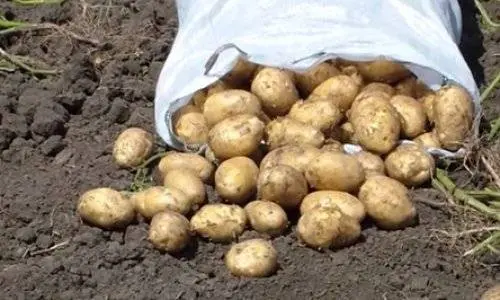
It is possible to understand how these requirements are met only if a thermometer and a humidity meter are installed in the cellar. You can control the temperature and humidity in the storage in the following ways:
- To reduce the temperature, you can open the air vents in winter or place containers with frozen water around the perimeter of the room.
- You can warm potatoes in the cellar with a cotton blanket, burlap, sprinkled with a layer of dry sand or straw. Hot water bottles placed around the perimeter of the cellar will also increase the air temperature.
- You can reduce the humidity in the cellar by placing containers with slaked lime or by covering the tubers with hygroscopic material (burlap). A layer of beets on top of a mound of potatoes will also absorb excess moisture.
- The easiest way to increase the level of humidity in the cellar is to spray its walls with water from a spray bottle.

Thus, choosing a place for storing potatoes, if necessary, you can adjust the temperature and humidity of the air in it. However, it will not be possible to artificially maintain the optimal microclimate in the cellar. This will unnecessarily take a lot of time and effort, so the listed measures are rather a way out of a force majeure situation when weather conditions change dramatically. In general, the characteristics of the cellar must initially meet the above requirements.
Not every potato variety is suitable for storage
Even in conditions with optimal humidity and temperature, potatoes can deteriorate during winter storage. The fact is that not all varieties are suitable for long-term storage:
- Early and medium early potatoes can be stored for no more than 2 months. This category includes such well-known varieties as Aurora, Hostess, Rocco, Peter’s Mystery and some others.
- All late varieties of potatoes, as a rule, are stored without any problems until the harvest of the next season. The leaders in terms of storage time are the Zhuravinka, Atlant, Chaika, Slavyanka varieties.
- An exception to the rule are varieties “Scarlett” and “Nevsky”. This potato does not belong to the category of late varieties, but at the same time it demonstrates high rates of keeping quality and taste.
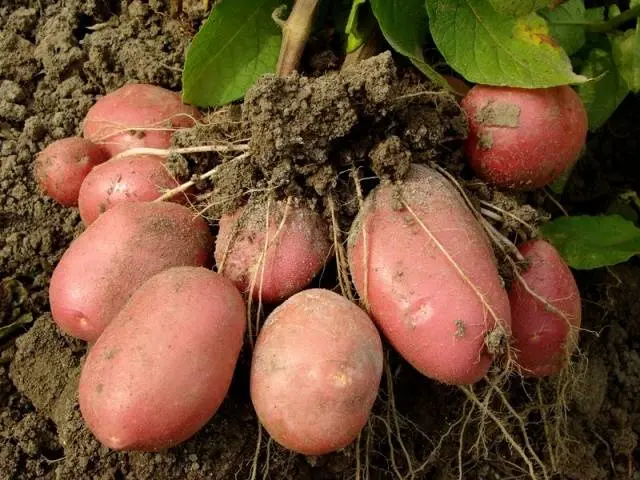
The characteristics of the keeping quality of potatoes depend not only on the chosen variety, but also on the conditions in which it grew:
- growing potatoes in the rainy season can result in a 50% yield loss;
- vegetables grown on sandy soils are stored much better than on heavy types of soil;
- increased amount of potassium and low amount of nitrogen allows you to grow a crop with increased suitability for storage;
- various diseases that affect potatoes during cultivation can damage up to 70% of the crop during storage. At the same time, even careful selection of tubers does not always reduce the percentage of losses, since fruit defects can be hidden deep inside.
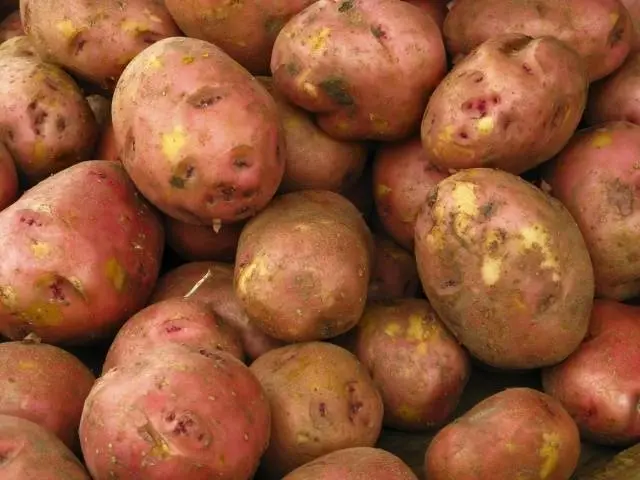
When laying potatoes for storage in the cellar, it is necessary to take into account all of the listed factors and, if possible, take all measures to reduce their impact. So, you can improve the storage of potatoes in the cellar by following some rules for harvesting and preparing it at the stage even before laying it in the cellar.
Preparing potatoes for long-term storage
It is necessary to make sure that the storage of potatoes in the cellar is long and successful even before the harvest. So, on the leaves of the tops there may be viruses and bacteria that accidentally get on the surface of the tubers in the process of digging and activate their harmful activity after the vegetables are stored for storage.
Tubers, being in the ground for a week after mowing, acquire a coarser skin, which is resistant to mechanical damage and contributes to long-term storage of tubers.
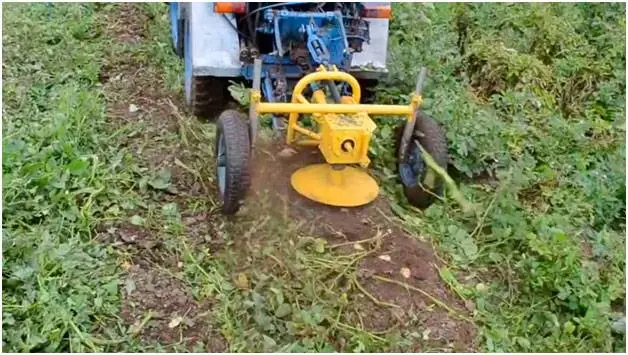
After harvesting, you should not rush to store it, because before putting the potatoes in the cellar, they must go through the following steps:
Stage of treatment
Immediately after the potatoes are on the surface of the earth, you do not need to pour them into bags or boxes, because the tubers must go through the so-called treatment stage. To do this, they are left to dry at the place of cultivation. Under direct sunlight, potatoes can be without loss of quality for no more than two hours, after which the crop must be transferred under a canopy. Unhindered access to fresh air will allow all wounds and damage on the surface of the tubers to heal, their skin will become rougher and more resistant to mechanical damage and diseases.
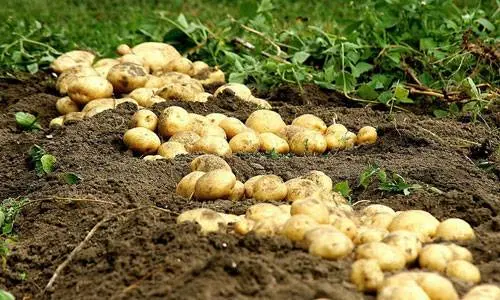
Sorting
As a rule, owners who independently grow potatoes on their land plots select planting material for next year in the fall. Seed potatoes are scattered on a sunny plot of land for 1-2 days, so that solanine is produced in the tubers and they become slightly green. These seed potatoes will keep well until spring. Rodents and other pests will ignore it.
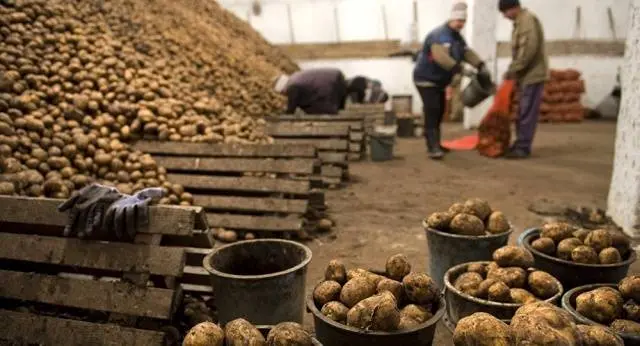
Further sorting consists in selecting the most “beautiful” potatoes for long-term storage. They must be mature, dry, without visible damage on the surface and the presence of sprouts. Tubers of very large sizes, as well as damaged tubers, are laid for an average shelf life. Crushed, disease-damaged and other “doubtful” specimens of tubers should not be lowered into the cellar at all, since they can damage a large number of vegetables around them during the maturation process.
Охлаждение
The cooling period precedes the laying of potatoes in the cellar or cellar. This stage consists in a gradual change in the temperature regime. For two weeks, reduce the temperature to + 2- + 40C. This allows you to slow down the biochemical processes in tubers and prepare vegetables for long-term storage.
Carrying out all the above stages of potato preparation, it will be possible to store only a high-quality, selected product, which, even with the advent of spring, will not significantly change its characteristics.
A clean cellar will save the harvest
Each owner himself has the right to decide how potatoes are in the cellar in winter: in bulk, in cloth bags or boxes. At the same time, there are general rules for preparing the premises and containers for the winter period. So, before storing potatoes for storage, it is necessary to disinfect the premises. To do this, walls, stairs, shelves and all other elements of the cellar are treated with a solution of lime with the addition of copper sulfate. For disinfection, you can also use a concentrated solution of potassium permanganate. After processing, the room must be dried. To do this, open the vents or hood.
You can learn more about the processing of the cellar from the video:
Potatoes are stored in bulk, without the use of special containers, as a rule, if the amount of the crop is not too large, since this method has one significant drawback: if there are 2-3 foci of decay, you can quickly lose a large amount of potatoes. Before storing vegetables in bulk, care must be taken to install pallets that will provide ventilation at the bottom of the cellar.
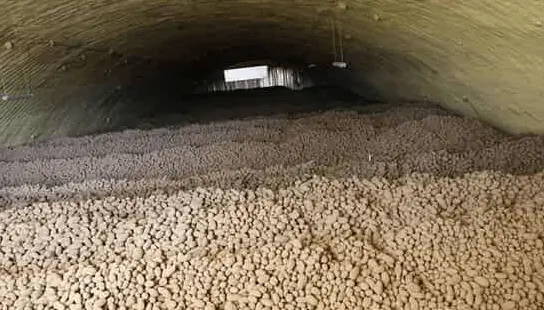
Many homeowners find it best to store potatoes in containers and crates, as they are easy to stack in multiple rows, making the most of cellar space. Such containers provide good ventilation of vegetables, preventing rotting and the development of diseases.
Bags and nets are most often used by farmers for harvesting for subsequent sale. The use of bags made of natural materials also ensures the necessary air circulation. When a rotting site appears, only a small amount of potatoes is damaged.
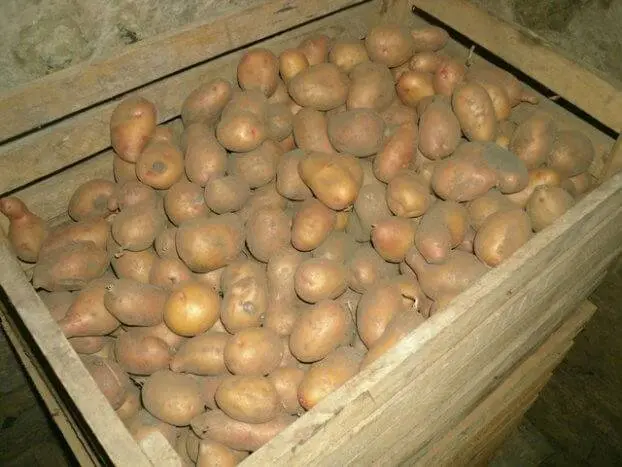
It is possible to properly store potatoes in the cellar only if the rules for preparing the premises and containers are observed. Otherwise, fungi, bacteria and viruses from year to year will cause more and more damage to the crop during storage.
A video on how to store potatoes in the cellar in winter can be useful not only for beginners, but also for experienced owners:
spring sprouts
Having studied the above material, even an inexperienced owner will know how to properly store potatoes in the cellar. However, with the advent of spring, the tubers inevitably begin to awaken. The awakening time depends largely on the variety and storage conditions: early varieties awaken as early as mid-February, late potatoes can be stored unchanged until April. You can slow down the process of emergence of sprouts by lowering the temperature to +1-+20C. If large sprouts appear, they should be removed mechanically.

Conclusion
Thus, it becomes clear that it is not enough just to grow a good potato crop on your site or buy it at a fair. It is much more important to know how to store potatoes in the winter. After all, the quality of the product during the maturation process can deteriorate significantly and then all the work and effort will be wasted. In order to prevent this from happening, it is important to know and remember the basic rules for sorting and preparing the crop for planting, and take into account the recommended storage conditions. Only by fulfilling all storage requirements can you stock up on good potatoes that will delight with their taste until the new crop ripens.









